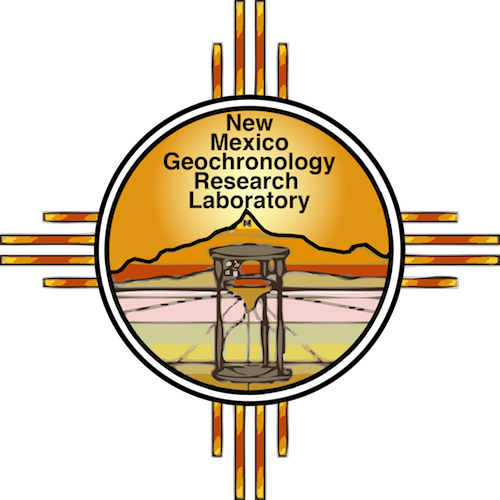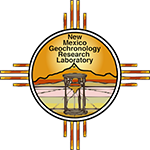
New Mexico Geochronology Research Laboratory

Introduction
The New Mexico Geochronology Research Laboratory (NMGRL) in Socorro is a state-of-the-art 40Ar/39Ar dating facility administered by the New Mexico Bureau of Geology at the New Mexico Institute of Mining and Technology.
Since its founding in the winter of 1992, the NMGRL laboratory has performed 400,000+ individual analyses. The first 16 years the NMGRL isotope analysis was conducted using a Mass Analyzer Product (MAP) 215-50 with a single collector. In 2008 the lab added a new Thermo Scientific ARGUS VI multi-collector mass spectrometer. A second ARGUS VI was added in 2010. NMGRL ran two ARGUS VI mass spectrometers until 2015 when we trading in one of the ARGUS VI for a new Thermo Scientific Helix MC. We have been running in this configuration 365 days a year since 2016.
The efficient operation of the laboratory relies on software (Pychron) developed in-house by Dr. Jake Ross. This advanced, full featured software suite allows for full automation of all the extraction line and mass spectrometer functions. The software controls the three laser systems, the resistance furnace, and all crucial extraction line and mass spectrometer valves operated via pneumatic air drivers. Additional automation comes from laser and furnace sample "packages" which can contain up to 221 and 17 individual samples per load, respectively. Once under vacuum, sample analyses do not require the physical presence of laboratory personnel for extended periods of time.

Argon gas extraction at NMGRL is accomplished either by resistance furnace, CO2 laser, Diode (810nm) laser heating, or UV Excimer 193 laser ablation.
NMGRL's resistance furnace is a double vFacFuum “Heine”-type resistance furnace with molybdenum crucible and crucible liner. Temperatures accuracy is ±10°C; precision is ±1°C; maximum temperature is 1750°C. Argon blanks for the entire furnace extraction line (dual stage) are on the order of 5x10-16 moles of 40Ar. The addition of a gate valve between the crucible and sample holder decreases the furnace's procedural blank as well as reduces turnaround time for sample changes.
NMGRL uses a 75 watt Photon Machines Fusions CO2 laser for single crystal laser fusion. The CO2 laser provides many of the advantages of other lasers used in argon extraction (e.g. Ar-ion and Nd-Yag) but requires only a fraction of the cost to set up. The CO2 laser at NMGRL is used mainly for the total-fusion of sanidine crystals on the ARGUS VI mass spectrometer which include J-value determinations from Fish Canyon Tuff (FC-2) sanidine monitors. Procedural blanks for the CO2 laser are on the order of 2xE-19 moles of 40Ar.



